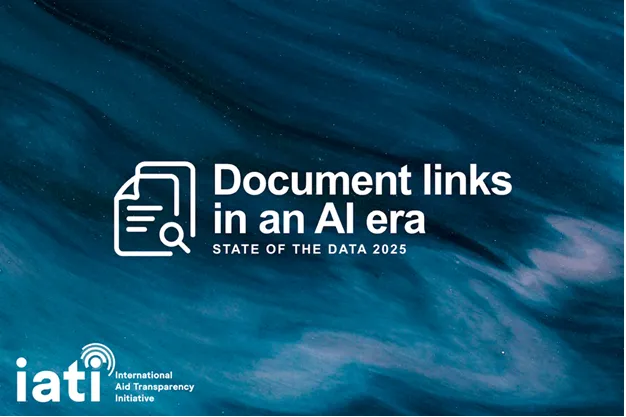Introducing IATI State of the Data: unlocking the potential of development transparency
This new series looks at how IATI data is being published and used and how valuable this data is for driving more effective and transparent development cooperation.
The development and humanitarian landscape is more complex than ever: fragmented finance, protracted crises, and geopolitical tensions are reshaping how aid operates. Governments, funders, and implementers face growing pressure to show impact, coordinate better, and do more with less.
Arguably, there has never been a stronger case — or a more urgent moment — for good development data.
Arguably, there has never been a stronger case — or a more urgent moment — for good development data. Reliable, accessible data is essential to navigate these challenges, inform decisions, and ensure limited resources reach the people and places that need them most.
Introducing State of the Data series
Over three focused analyses, we’ll look at current publishing practices, what they enable now, and where practical improvements could make a difference. Alongside each analysis, we’ll open space for community discussions, inviting your insights on where to prioritise efforts and how to shape pragmatic next steps.
Our approach will focus on understanding the qualities of IATI data: how it’s being used, what it makes possible, and how it can be improved to better support the decisions and systems that rely on it.
These documents are a gold mine of qualitative information — from project objectives and budgets to results, evaluations, and strategy papers.
First analysis: Document links
The first analysis focuses on document links: which reference nearly half a million unique documents published by over 900 organisations. These documents are a gold mine of qualitative information — from project objectives and budgets to results, evaluations, and strategy papers.
They provide critical context behind the structured data: explaining why development and humanitarian activities are happening, how resources are being used, and what outcomes are expected or achieved. With recent advancements in artificial intelligence, new possibilities are emerging to search, analyse, and interpret large volumes of this qualitative information.
State of the Data Dialogue webinars: Document Links in an AI era
Join us for two interactive webinars exploring IATI document links and their potential in an AI-driven world.

State of the Data Dialogue: Document Links in an AI era
- Webinar PART 1: 8 July 2025 (9 - 10am EST / 1 - 2PM UTC)
- Webinar PART 2: 15 July 2025 9 - 10:30am EST / 1 - 2:30PM UTC)
- Location: Both online (Zoom)
We explore how these links contribute to transparency, accessibility, and machine-readability — especially in an AI-driven environment where search, analysis and verification increasingly depend on high-quality digital source material.
The webinars will feature:
- A closer look at the methodology and key findings from the analysis
- Speakers from the UK Foreign, Commonwealth & Development Office (FCDO) and Germany’s Federal Ministry for Economic Cooperation and Development (BMZ)
- Space for open discussion, questions and shared reflections across the community
- Early thinking on strategic and operational recommendations, helping to shape the future of IATI
We encourage all data publishers, users, policymakers, and development partners to join the discussion and help shape the future direction of IATI’s data work.
What’s next?
Our next analysis in the series will look at organisation references – a key part of how IATI data connects across systems. It will explore which organisations are being referenced, how consistently, and what that means for users trying to trace funding flows, or compare data across organisations.
If you publish or use IATI data, we hope you’ll join the conversations. Your insights will help us understand where to focus next, so that data can better support transparency, accountability, and informed decisions in the development and humanitarian sectors.